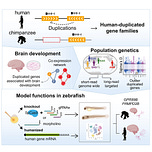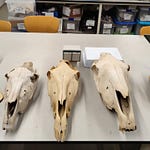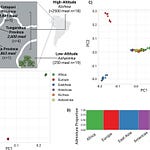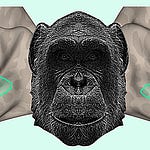The Repeats That Make Us Human
The human genome is filled with redundancies. Long stretches of DNA repeat themselves in patterns that resemble stuttering speech on a page. For years, these sequences have sat in the shadows of genetic research, dismissed as structural clutter or simply too difficult to parse.
But a new study in Cell1 is making the case that some of these repeats may have played a central role in human brain evolution. By focusing on a little-studied class of recently duplicated genes, researchers have found two that influence brain development in ways that are potentially unique to our species. The work also opens a door into how these regions might contribute to neurological conditions such as autism and language disorders.
“Historically, this has been a very challenging problem,” said Megan Dennis, senior author and associate director of genomics at UC Davis Genome Center. “People didn’t know where to start.”
Now they do.
Listen to this episode with a 7-day free trial
Subscribe to Anthropology.net to listen to this post and get 7 days of free access to the full post archives.










